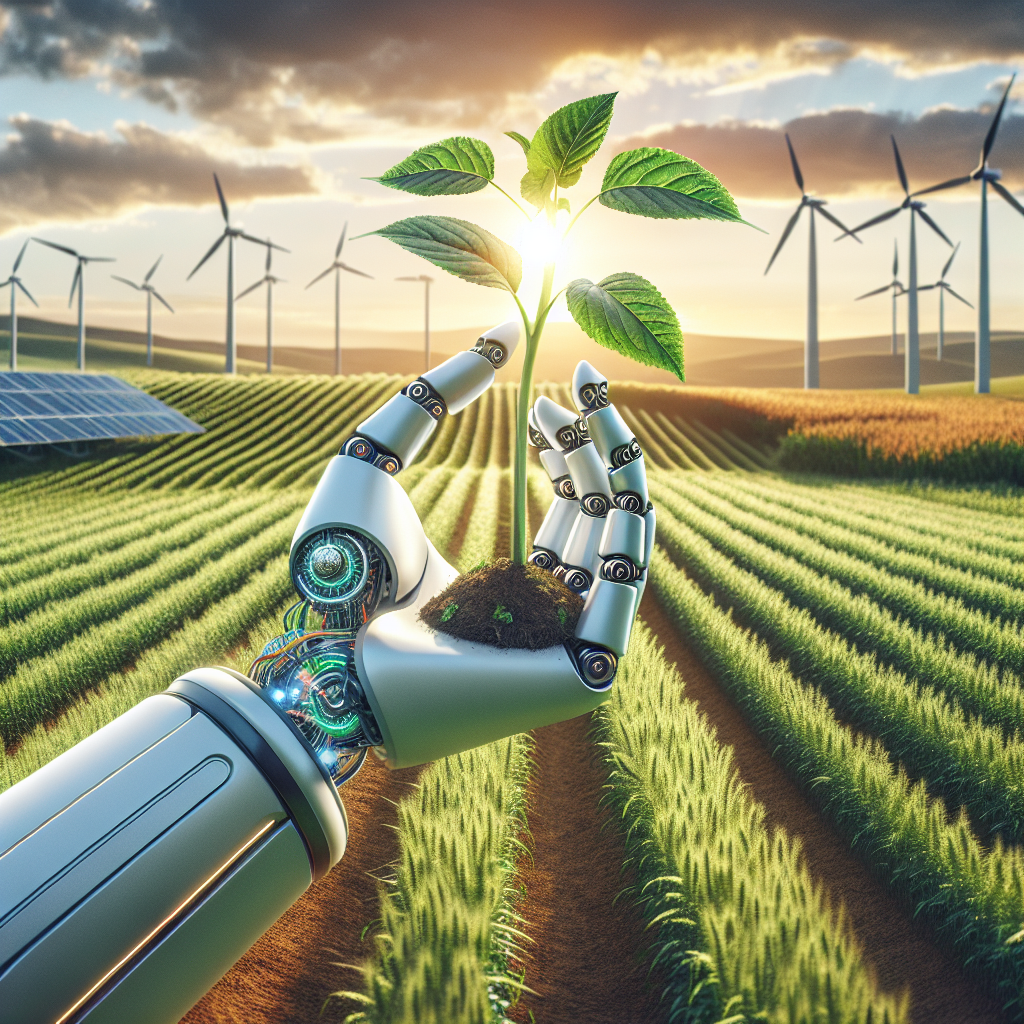AI and Agriculture: Cultivating Sustainable Food Systems
In the face of growing global food demands and the urgent need for sustainable practices, the integration of Artificial Intelligence (AI) into agriculture is not just innovative; it’s imperative. AI’s role in transforming agricultural practices heralds a new era of efficiency, productivity, and environmental stewardship. This article delves into how AI is revolutionizing agriculture, paving the way for a sustainable food system, and addressing some of the most pressing questions surrounding this transformative synergy.
The AI Agricultural Revolution
AI in agriculture is more than just a technological upgrade; it’s a paradigm shift. By harnessing the power of machine learning, big data analytics, and advanced sensors, farmers and agribusinesses can now make more informed decisions, optimize resources, and boost crop yields, all while minimizing environmental impact. This revolution is not confined to large-scale farms; it’s equally transformative for smallholders around the world, offering them data-driven insights and tools previously out of reach.
Precision Agriculture: The Heart of AI Integration
At the core of AI’s agricultural impact is precision agriculture. This approach uses AI to analyze data from satellite images, drones, ground sensors, and weather forecasts to monitor crop health, soil conditions, and moisture levels. It allows for precise application of water, fertilizers, and pesticides, reducing waste and environmental harm. Precision agriculture exemplifies how AI can enhance efficiency and sustainability simultaneously, ensuring that resources are used judiciously to achieve optimal crop growth.
Predictive Analytics: Forecasting for the Future
AI’s predictive capabilities are revolutionizing how farmers plan and manage their crops. By processing vast amounts of data, AI can forecast weather patterns, predict pest invasions, and anticipate crop diseases before they occur. This foresight enables farmers to take preventative measures, safeguarding their harvests and reducing the need for emergency interventions, which are often costly and environmentally damaging.
Robotics and Automation: Hands in the Soil
Robotics and automation, powered by AI, are redefining labor in agriculture. From autonomous tractors that till, plant, and harvest to drones that monitor crop health from the sky, these technologies are reducing the need for manual labor, increasing precision, and protecting workers from hazardous conditions. Moreover, robotic systems can operate around the clock, ensuring that agricultural activities never have to pause, boosting productivity, and efficiency.
Challenges and Opportunities
Despite its potential, the integration of AI in agriculture faces challenges. High initial costs, the need for digital infrastructure, and the requirement for technical expertise can be barriers, particularly in developing countries. However, the opportunity for collaborative initiatives, government support, and public-private partnerships is immense. By addressing these challenges, we can unlock AI’s full potential in agriculture, making food systems more resilient, sustainable, and equitable.
The Ethical Dimension
As we embrace AI in agriculture, ethical considerations must take center stage. Issues such as data privacy, ownership, and the impact of automation on agricultural jobs require thoughtful dialogue and regulation. Ensuring that AI benefits all stakeholders, particularly smallholder farmers who are most vulnerable to being left behind, is crucial for fostering an inclusive agricultural future.
Toward a Sustainable Food System
AI in agriculture is not just about technological advancement; it’s about reimagining how we grow our food to meet current and future demands sustainably. By increasing yields, reducing waste, and minimizing environmental impact, AI-driven practices can contribute significantly to global food security and environmental conservation.
FAQs
Q: Can AI in agriculture really help combat climate change?
A: Yes, by optimizing resource use and reducing waste, AI-driven agriculture can significantly lower greenhouse gas emissions associated with farming practices. Additionally, predictive analytics can help farmers adapt to changing climate conditions, making agriculture more resilient to climate change.
Q: Is AI in agriculture expensive?
A: Initial setup costs for AI technologies can be high, but the return on investment, in terms of increased yields, reduced resource use, and lower labor costs, can offset these expenses over time. Moreover, technological advancements and economies of scale are likely to reduce costs further.
Q: How does AI affect agricultural employment?
A: While AI and automation can reduce the need for manual labor, they also create opportunities for new types of jobs, such as drone operators and data analysts. Education and training are key to ensuring that the agricultural workforce can adapt to these changes.
Q: Can small-scale farmers benefit from AI?
A: Absolutely. Although challenges exist, initiatives aimed at providing access to AI technologies, training, and support can ensure that small-scale farmers also reap the benefits of AI. Mobile technologies, for example, can bring AI-driven insights directly to smallholders’ fingertips.
Q: What’s the future of AI in agriculture?
A: The future of AI in agriculture is promising and expansive. From gene editing for crop improvement to AI-driven supply chain optimizations, the potential applications are vast. As technology continues to evolve, so too will its ability to address the complex challenges of modern agriculture.
Conclusion
The integration of AI into agriculture offers a beacon of hope for the future of food systems. By enhancing productivity, sustainability, and resilience, AI-driven technologies are pivotal in our quest to feed a growing global population in an environmentally sustainable manner. As we continue to navigate the complexities of modern agriculture, the synergy between AI and farming practices stands as a testament to human ingenuity and our capacity to innovate for the greater good.

